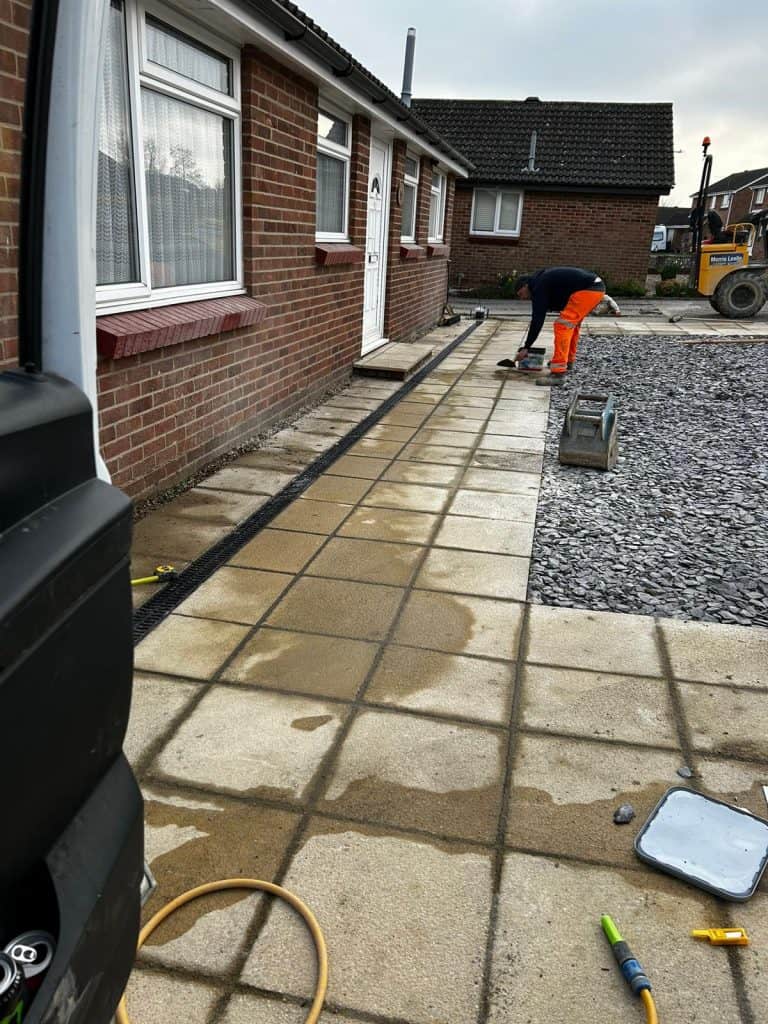
Soakaways are vital components of domestic drainage systems, quietly managing excess water beneath the surface to prevent flooding and water logging.
In residential settings, soakaways serve the crucial role of diverting rainwater away from impermeable surfaces like roofs and driveways. By providing an underground reservoir for water storage and infiltration, soakaways help regulate surface water runoff and reduce the risk of flooding, ensuring that gardens and properties remain dry and protected during heavy rainfall.
Soakaways function by collecting rainwater from down-pipes or surface drains and directing it into an underground chamber or pit filled with permeable materials like gravel or rubble. Once inside the soakaway, the water slowly infiltrates into the surrounding soil, where it is absorbed and dispersed, replenishing groundwater levels and minimizing surface water runoff.
Effective drainage is essential for preventing flooding and water damage to residential properties. By incorporating soakaways into drainage systems, homeowners can significantly reduce the risk of surface water accumulation, erosion, and structural damage caused by excess moisture. Properly functioning soakaways ensure that gardens remain dry and usable, enhancing the overall quality of outdoor living spaces.
Infiltration soakaways are designed to allow water to gradually seep into the surrounding soil through porous materials such as gravel or stone. This type of soakaway is ideal for properties with permeable soil conditions and adequate space for water absorption, providing a sustainable solution for managing rainwater runoff.
Percolation soakaways utilize specialized drainage crates or chambers to facilitate the controlled movement of water into the ground. These modular systems offer versatility and flexibility in design, making them suitable for a wide range of soil types and site conditions. Percolation soakaways are particularly effective in areas with limited space or high groundwater levels, where traditional infiltration methods may be less feasible.
Soakaways help mitigate the impact of heavy rainfall by capturing and storing excess water underground, reducing surface water runoff and minimizing the risk of localized flooding. By promoting infiltration and groundwater recharge, soakaways contribute to sustainable water management practices and protect the natural environment.
By diverting rainwater away from the surface and allowing it to infiltrate into the soil, soakaways help prevent water logging and soil erosion in gardens and landscaped areas. This helps maintain soil structure and fertility, promoting healthy plant growth and reducing the need for irrigation.
Choosing the Right Spot
When planning the location of a soakaway, it’s essential to consider factors such as soil type, groundwater levels, and proximity to buildings or utilities. Siting the soakaway in a well-drained area with adequate permeability will ensure optimal performance and longevity of the system.
Materials and Construction
The construction of a soakaway typically involves excavating a pit or trench and filling it with a suitable aggregate material, such as gravel, crushed stone, or proprietary drainage crates. A geotextile membrane may be used to separate the aggregate from the surrounding soil and prevent clogging. Solid pipes or perforated drainage tubes are installed to convey water to and from the soakaway, ensuring efficient water flow and distribution.
Regular Inspection and Cleaning
To ensure the continued effectiveness of a soakaway system, regular inspection and maintenance are essential. This may involve checking for signs of blockages or sediment buildup, removing debris or vegetation from the surface, and flushing the system with water to clear any obstructions.
Addressing Common Issues
Common issues with soakaways include blockages, sedimentation, and groundwater contamination, which can impair the system’s performance and lead to drainage problems. By promptly addressing these issues and implementing corrective measures, homeowners can prevent costly repairs and ensure the long-term reliability of their soakaway systems.
Compliance with Local Codes
Before installing a soakaway system, it’s important to familiarize yourself with local building codes and regulations governing drainage and groundwater management. Compliance with these requirements will ensure that the system is designed and constructed to meet industry standards and environmental guidelines.
Environmental Considerations
Incorporating sustainable drainage practices into soakaway design and operation can help minimize the environmental impact of storm water runoff and promote ecosystem health. This may include using permeable paving materials, implementing green infrastructure techniques, and incorporating rainwater harvesting systems to capture and reuse runoff for irrigation or non-potable uses.
Frequently Asked Questions (FAQ)
For more information on domestic drainage soakaways, visit Drain Division.
Contact our team of experts today. Our offices are open 6am to midnight 7 days a week.